Scanning Around with Gene: Electric Blankets and the Cold War

Growing up during the tail end of the Cold War with Communism meant an always-present unease over any number of fears. For some, it was the threat of nuclear holocaust. For others, the fear was that Communist sympathizers would infiltrate the government and slowly distort our American democracy. And then for at least one Word War II veteran, my mother, the biggest fear of Communists was that they would come into the home and take away her most prized possession: the electric blanket.
As the weather has turned unusually cold this winter, even here in sunny California, I’ve been thinking a lot about my mother’s obsession with keeping warm at night and her life-long love affair with the electric blanket. I don’t use an electric blanket myself, but three of my five dogs are small and nearly hairless terriers who, like my mother, have become unnaturally addicted to their heated dog beds and anything else in the house that generates warmth. I defy even the most well-armed Communist to try and take away the Mini-Pin’s heating pad.
Click on any image for a larger version.
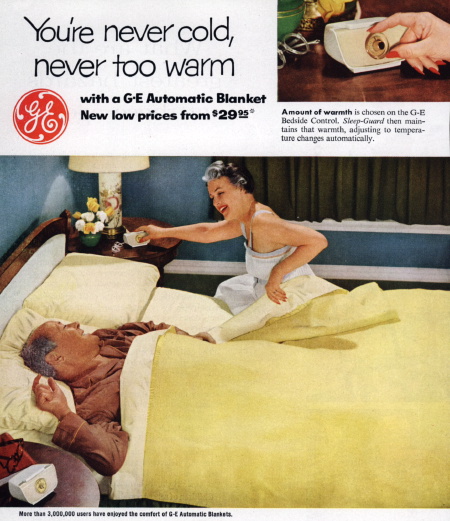

Electric blankets may represent the ultimate in bourgeoisie possessions, whether for people or dogs, but keeping warm at night has been an age-old quest. As soon as humans discovered sources of heat, those sources were applied to the sleeping chamber, sometimes with disastrous results. Where there is heat there is often fire, and that can open up more threats than the Communists ever presented.
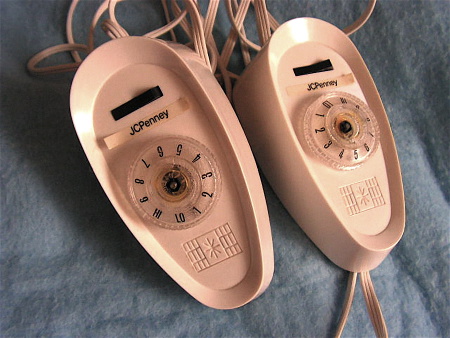

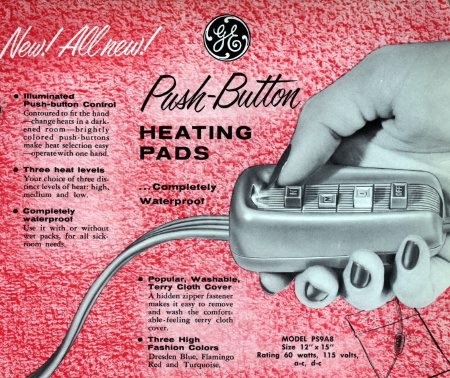
Modern electric blankets are relatively safe, though the United States Consumer Product Safety Commission says that there are still several hundred fires caused by them each year. Many of the fires can be blamed on old blankets made before 1988, when the circuitry was less reliable than the type used today. Fires from electric blankets are much higher in the United Kingdom, where 90 percent of such devices are actually heated mattress pads that you sleep on, as opposed to the blanket-style devices we Americans prefer.


The history of electric blankets is a little murky, but we do know that they gained popularity first in tuberculosis sanitariums during the 1920s and ’30s. There, patients were encouraged to gets lots of fresh air, which meant leaving windows open and sleeping outside at night. The electric-heated blanket was a perfect compliment to the fresh-air prescription. Here, from Life magazine, is an Alfred Eisenstaedt photo of a tuberculosis patient in 1937 lying under an electric blanket at the Trudeau Sanitorium in Saranac Lake, New York.

It wasn’t until 1936 that a fully automatic electric blanket was invented, with a thermostatic control to regulate heat based on the ambient room temperature. Today, electric blankets sense both room and body temperature and adjust accordingly.

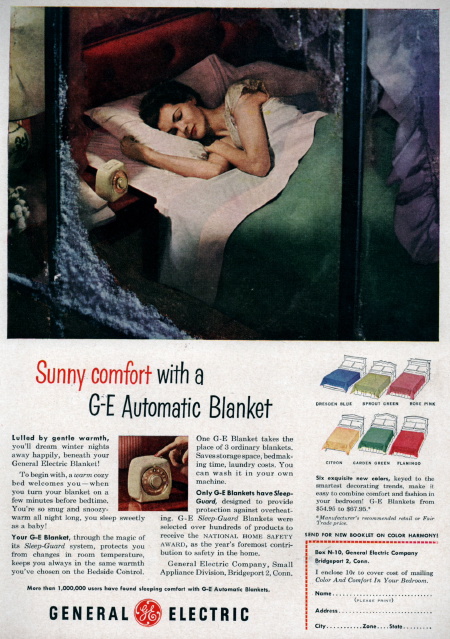
I request that my mother, who is 89 and still sleeps with an electric blanket, replace her blanket every few years. Worn blankets are the biggest danger.
Any kind of electric blanket, worn or new, that’s meant for humans isn’t good to use for animals. There are special low-voltage heating units for pet beds, and one of the favorites around my house is a small corn-filled pillow we heat in the microwave. Now whenever the microwave dings, there is a line-up of shivering dogs hoping it’s their turn with the miraculous corn pillow.

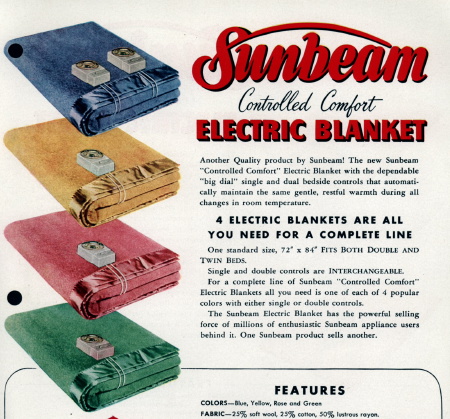
Another possible hazard to consider in your trade-off between comfort and health is the elctro-magnetic radiation that sleeping under an electric current can create. That may explain a lot of issues I have with my mother, actually, and is certainly a good reason to avoid novelty products such as this one I found on eBay:
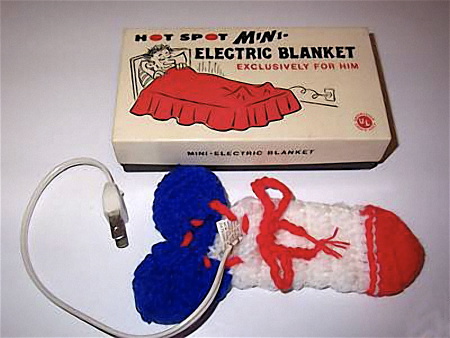
Go to page 2 for more!
This article was last modified on May 18, 2023
This article was first published on December 12, 2008



